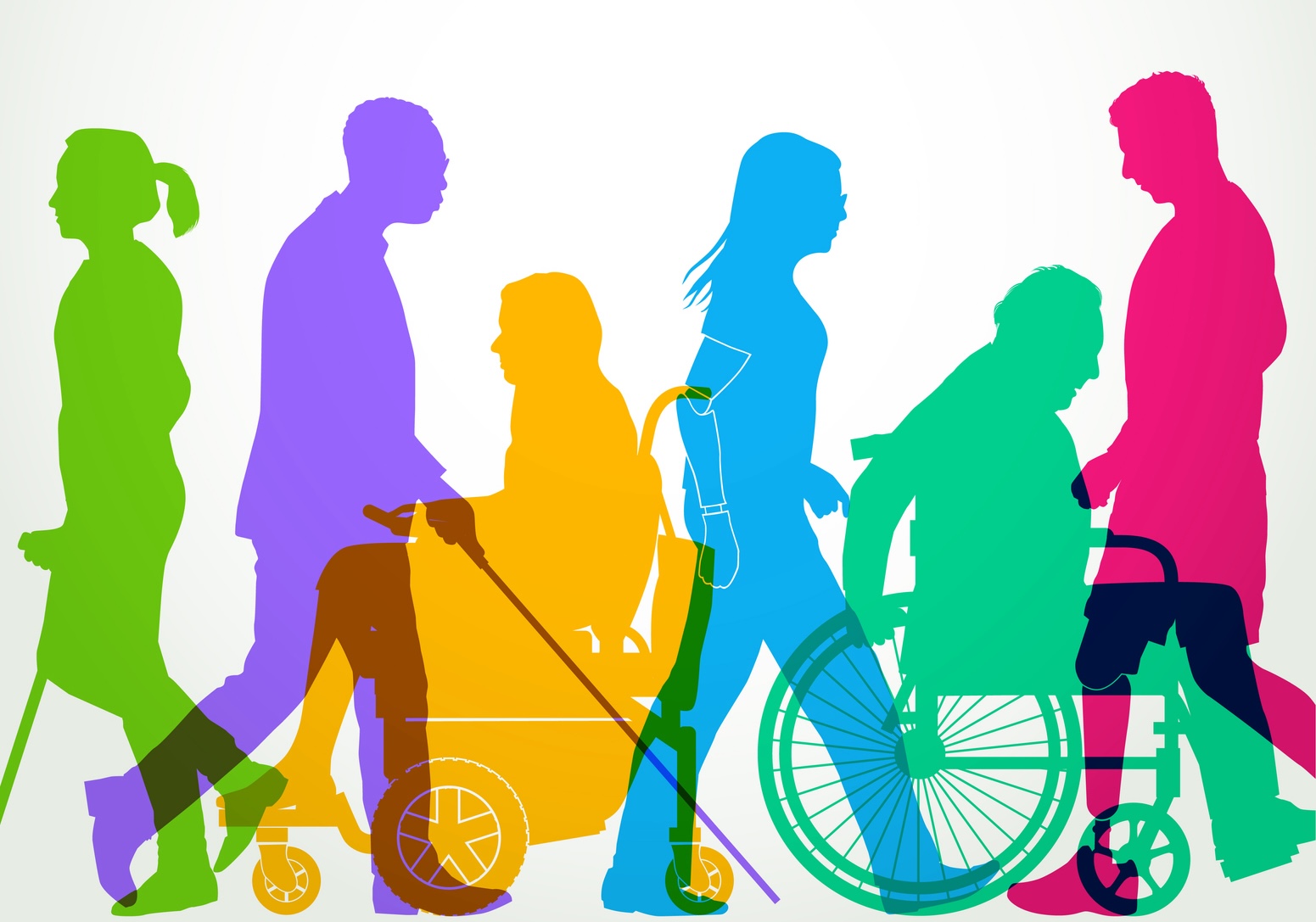People with disabilities need strong federal laws, policies, and programs that take their needs and aspirations into account. Project 2025 would eviscerate these standards and push disabled people back to an earlier, shameful era of isolation, exclusion, and institutionalization.
At nearly 900 pages, and covering dozens of agencies, laws, and regulations, it is difficult to capture in one piece the devastating impact that Project 2025 would have on the disability community. Here are some of the most disturbing policies for people with disabilities contained in the plan:
Medicaid and People with Disabilities
People with disabilities need Medicaid to live free and independent lives in the community. Medicaid covers wheelchairs, ventilators, personal care attendants, skilled nursing care, medical transportation, and supported employment. Medicaid is the funding source for implementation of Olmstead, the 1999 Supreme Court case that affirmed the right of people with disabilities to live in the community with supports. Project 2025 would gut Medicaid by slashing federal dollars and enforcing time limits and lifetime caps. (466-68) A similar proposal defeated in 2017 by the disability community and others would have cut $800 billion from Medicaid. Project 2025 would force disabled people and others off Medicaid using assets tests, eligibility reviews, cost-sharing, and work requirements. (467-68) Project 2025 would push disabled people out of their homes and into hospitals and nursing homes.
Affordable Care Act and People with Disabilities
Before the Affordable Care Act, people with disabilities could not leave their jobs or were forced to stay on Medicaid to maintain access to life-saving healthcare. The ACA, together with its nondiscrimination clause Section 1557, guaranteed the right to purchase a health plan covering a minimum package of essential benefits, regardless of preexisting conditions and without exclusions, discrimination, or annual caps. Project 2025 would turn its back on the ACA by rescinding federal rules and returning control over healthcare back to the “private market,” leaving disabled people once again at the mercy of insurance companies. (469-70) Project 2025 would legalize discrimination based on pregnancy and transgender status in federally funded health programs. (475)
K-12 Students with Disabilities
Students with disabilities – and especially low-income disabled students – need strong public schools that can provide each disabled student with the services and supports they need to succeed and learn alongside their nondisabled peers. Project 2025 would harm disabled and low-income students by slashing federal dollars through block grants. (320-22, 325-26) Project 2025 would eliminate the Department of Education – the federal agency that sets standards for serving disabled and low-income students and investigates complaints of disability discrimination. (325-30) Project 2025 would expand unregulated voucher programs and charter schools – private programs that often exclude and neglect disabled students. (326, 331, 346-47) Project 2025 would repeal the rule that requires school districts to consider race and ethnicity in the identification, placement, and discipline of students with disabilities. (331, 336) Project 2025 would legalize discrimination based on transgender status at school. (333-34)
Housing and People with Disabilities
People with disabilities need affordable, accessible housing. Project 2025 would push disabled people and others out from federally funded and subsidized housing through work requirements and time limits. (509, 511) It would end “Housing First” programs that reduce homelessness among those with the most significant disabilities and substance use disorders. (509) At a time when federal support for affordable accessible housing should be sharply increased, Project 2025 would abandon the Housing Supply Fund, money to house very low-income people who are disproportionately disabled. (509) Project 2025 would repeal regulations that require federally funded housing programs to address discrimination based on disability and other protected characteristics. (509) It would prohibit noncitizens, including mixed-status families, from living in federally assisted housing. (509) And it would end the use of the “disparate impact” theory of discrimination, a key tool for enforcing the Fair Housing Act and other civil rights laws. (334-36, 583) If Project 2025 is implemented, equity would no longer be a goal of federal housing policy. (509) Disabled people would face even greater discrimination and barriers in housing.
Transportation and People with Disabilities
People with disabilities need accessible, safe, and affordable public transportation. Disabled people also need access to infrastructure like accessible sidewalks and pedestrian signals and equitable access to new transportation systems like ride-share companies and autonomous vehicles. Project 2025 would slash federal funds for public transportation and infrastructure like sidewalks, remove requirements to ensure access for people with disabilities, low-income and other less-served communities, and increase the role of private companies in transit. (619, 621-24, 629, 634-36) Project 2025 would further deregulate emerging technologies that currently exclude people with disabilities. (621, 624-25, 630)
Veterans with Disabilities
Veterans with disabilities need access to comprehensive physical and mental health care and benefits that empower them to thrive in their transition to post-service life. Access to benefits can prevent homelessness and save lives. Project 2025 would make it harder for disabled veterans to obtain disability benefits by limiting the health conditions that qualify veterans for disabled status. (649-50) Veterans who have not applied for benefits yet could be denied benefits, and veterans already receiving benefits could have them significantly reduced. Project 2025 would also require Veterans Administration health facilities to triple the number of patients they see each day, allowing less time for comprehensive health care appointments and decreasing the quality of the care veterans receive. (647)
Immunocompromised Disabled People
Disabled people who are vulnerable to severe effects from infectious diseases like COVID need federal leadership that takes their needs into account. They need federal leadership to ensure nondiscriminatory evidence-based responses to future pandemics. They need infection controls including masking in healthcare settings. Project 2025 ridicules and condemns masking and mask rules for protection against infectious diseases in healthcare settings, elevating pseudoscience over actual evidence. (19, 21, 87, 283-84, 451-52, 454, 475, 482) Project 2025 would block the federal government from leading the public health response to future pandemics. (451-52)
Reproductive Rights and People with Disabilities
People with disabilities are entitled to make decisions about their bodies but have historically been denied this right. Disabled people get pregnant at similar rates to nondisabled people and need access to a full range of accessible reproductive health care. Pregnant disabled people are at higher risk for nearly every type of severe pregnancy complication and are 11 times more likely to die during childbirth. Project 2025 would effectively limit and ban medication abortion – including via telemedicine which can be more accessible for disabled people – by reversing the FDA’s approval of mifepristone. (458) Project 2025 would revive an centuries-old law which would bar the use of mail or other companies to transport tools and medications used in abortion. (285, 459) In an effort to end the crossing of state lines to access abortion care, and as a condition of Medicaid funding, Project 2025 would require states to collect and report to the federal government intimate private information about abortion patients. (455) Project 2025 would force federal agencies to recognize “fetal personhood,” a theory that threatens birth control, abortion, emergency contraception (“Plan B”) and fertility treatments. (450, 454, 485)
Transgender Disabled People
Transgender people including trans children and youth are disproportionately disabled with disabilities like gender dysphoria, autism, ADHD, and anxiety disorders. Project 2025 demonizes trans people and would restrict or end access to gender-affirming care. (1, 8, 62, 103-04, 284, 333, 345-46, 450, 456, 462, 472, 485, 491, 586, 644) Project 2025 would rescind federal policies and rules protecting trans people – including trans people with disabilities – from discrimination in federally funded programs. (4-5, 322, 333-34, 337, 343-44, 475, 477, 489, 495-96, 584)
Disability Advocacy and Student Loans
Advocates for people with disabilities – including people who work at legal aid, need public service loan forgiveness and income-based payment plans to manage their student loans. Project 2025 would end these essential programs. (322, 332, 337-38, 340, 353-54, 361)
Disability and the Census
Project 2025 would undermine the Census Bureau. The Bureau’s periodic census and related surveys are essential data collections that collect demographic information – including disability information – used to inform public policy and allocate federal funds to safety net programs used by people with disabilities. Disability community networks have long partnered with the Bureau to encourage participation in the census, but Project 2025 would “scrutinize” these partnerships. (680) Project 2025 would discourage participation by adding a citizenship question. (680) It would also sideline important collections like the American Community Survey and replace career leadership with political appointees. (678-79)
Note: This piece reviews some of the most alarming proposals set out in Project 2025 for disabled people but does not cover them all. Additional proposals in Project 2025 include harmful changes to Medicare, higher education, employment, safety net programs, climate change, environmental protections, and international programs.
DREDF recommends that you check your voter registration and consider disability public policy when you vote. Learn how to confirm your voter registration status: https://www.usa.gov/confirm-voter-registration.




